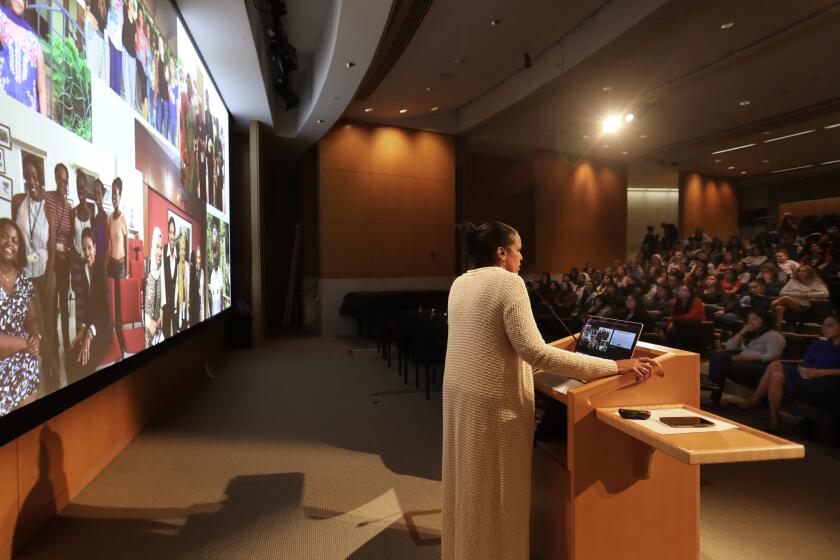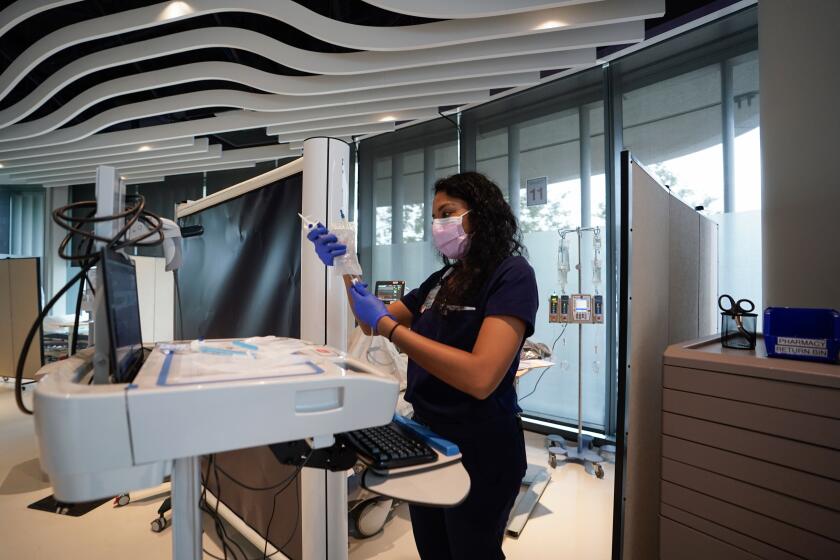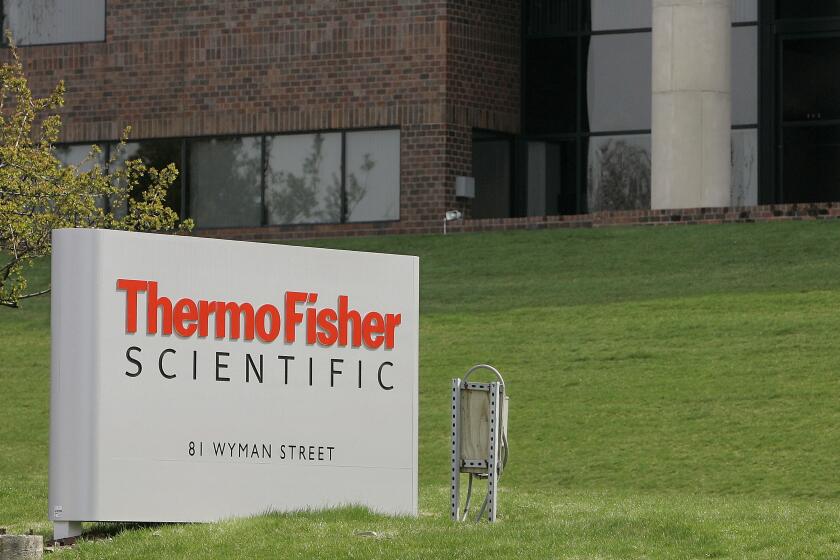Study explains mutation causing aggressive cancers
Researchers led by scientists at The Scripps Research Institute have figured out how a mutation causes especially fast-growing cancers, such as forms of leukemia, lymphoma, glioma and melanoma.
Drugs that could thwart this mutation are already in clinical trials, the researchers say in a study published Thursday. And the knowledge of how this mutation works will help identify patients who can be helped by these drugs.
It’s unclear just what percentage of cancers rely on the mutation, which affects a gene called POT1. But because these cancers are so aggressive, they are especially worrisome, said Scripps researcher Eros Lazzerini Denchi, a study author.
By examining human cell cultures and a mouse model with the mutation, the researchers outlined a complicated and subtle mechanism that produces cancer only if the exactly right (or wrong) chain of events takes place.
POT1 codes for a protein that safeguards telomeres, the protective ends of chromosomes. Telomeres also function as a cellular clock, allowing cells to divide a limited number of times. This mechanism prevents cells from growing without limit, one of the hallmarks of cancer.
Telomere dysfunction can lead not only to cancer but to diseases of premature aging, depending on the nature of the dysfunction.
The mutated POT1 protein works less efficiently, resulting in fragile telomeres, allowing chromosomes to break and join together, progressively scrambling the genome, the study found. This mutation is normally fatal, but scientists have discovered a number of cancers that have it.
How these cancers can exist with this deadly mutation posed a paradox. Scientists from Scripps Research, New York University School of Medicine and other institutions found that the cancer not only tolerates the mutation, but actually depends on it to survive.
The study was published in the journal Cell Reports, and can be found online at https://j.mp/tsripot1.
Lazzerini Denchi is the senior author. Alexandra M. Pinzaru of NYU is the first author. Other authors are Angela Beal and Nidhi Nair of Scripps Research; Aaron Phillips, Eric Ni, Timothy Cardozo and Agnel Sfeir of New York University; Robert Hom and Deborah Wuttke of the University of Colorado, Boulder, and Jaehyuk Choi of Northwestern University in Chicago.
Working in tandem
The researchers found that the mutation only causes cancer in the presence of another mutation, taking place in a well-known tumor suppressor gene called P53. Called “the guardian of the genome,” P53 causes excessively damaged cells to self-destruct. P53 mutations are found in more than half of cancers.
The POT1 mutation normally kills cells because without telomere protection, cells endure stress when replicating. This stress causes production of an enzyme called ATR that performs two roles, Denchi said. One is to allow replicating cells to repair DNA damage. The other is to trigger cell death in replicating cells with unrepairable damage. But defects in P53 block this self-destruct mechanism.
Once both these safeguards are damaged, cancer cells grow especially rapidly, forming large tumors, Lazzerini Denchi said.
Moreover, the POT1 mutation lowers the level of ATR, but doesn’t completely block it. A total loss of ATR is lethal, Denchi said. So cancer cells with low levels of ATR that survive the stress of replication can in some circumstances accumulate mutations that allow them to reproduce without limit. They have enough ATR to repair otherwise lethal damage, but not enough to trigger cellular suicide.
“There’s enough ATR activity to get by, to survive, but not enough to kill the cells,” Lazzerini Denchi said. “I think there’s an opportunity there. You have tumor cells that are aggressive, that grow really fast, and they depend on this low amount of ATR activity.”
Drugs that inhibit ATR are already in clinical trials, he said, and these should be useful against cancers with the mutation.
Evolution of cancer
Jan Karlseder, a telomere expert at the Salk Institute in La Jolla, said by email that the study was well done.
“I found it particularly fascinating that the authors discovered how the cells lacking POT1 circumvent the intracellular machinery that normally eliminates cells that suffer from replication stress,” Karlseder said.
“At first, the ATR dependent DNA damage detection machinery indeed alerts the cells to the replication problem. But in later stages ATR is partially suppressed by the cancer cells, allowing them to divide unchecked and to form aggressive tumors. This is a fascinating example of tumor evolution, where the cancers manage to escape the cellular control machineries.”
Karlseder has led major studies explaining how telomere dysfunction leads to cancer. A 2011 study he led described how some cancers restore their telomeres by using a DNA repair mechanism that is not normally used for the purpose. This is an alternative to the usual method, production of an enzyme called telomerase that specifically repairs telomeres.
He agreed that inhibiting the residual ATR should kill the mutated cancer cells.
“While it is not easy to fully suppress enzymes such as ATR specifically in cancer cells, the authors correctly predict that such a suppression should effectively kill POT1 dependent tumors,” Karlseder said.
The study was supported by the National Institutes of Health, NYSTEM, the California Institute for Regenerative Medicine, a Ruth L. Kirschstein National Research Service Award; The V Foundation for Cancer Research, two Pew Stewart Scholars Awards and the Novartis Advanced Discovery Institute.
Get U-T Business in your inbox on Mondays
Get ready for your week with the week’s top business stories from San Diego and California, in your inbox Monday mornings.
You may occasionally receive promotional content from the San Diego Union-Tribune.








